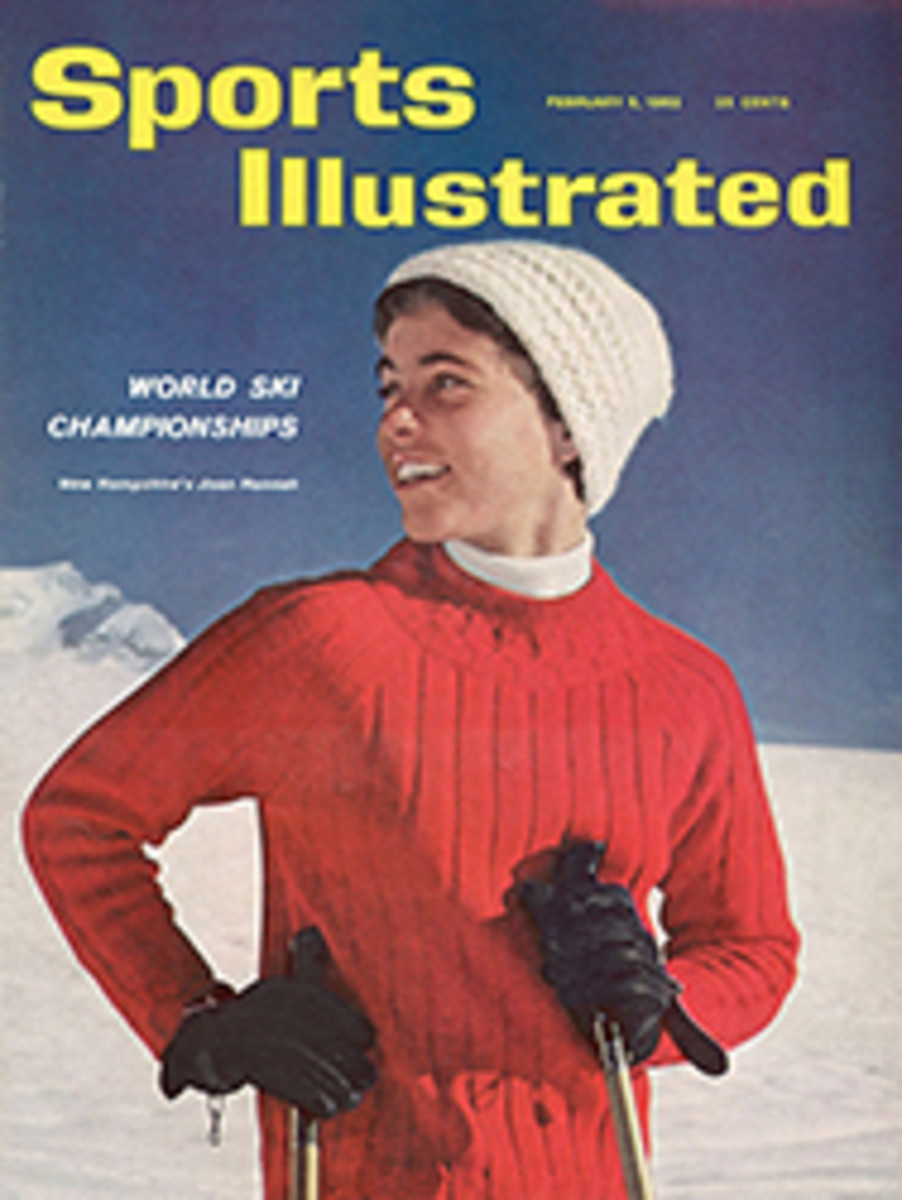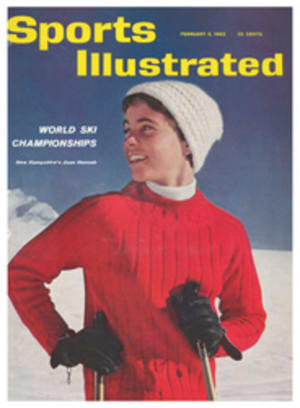
A SLIPPERY, TRICKY ROAD TO GLORY
The day beforethe Hahnenkamm downhill race in Kitzbühel, Austria, Adrien Duvillard, a leadingmember of the French team, was blazing down the mountain on a trial run whensuddenly he rose from his crouched "egg position" and skied the final750 yards straight up, laughing and waving his arms in pure joy. The course washard and fast, just the way the French like it. While skiers from othercountries struggled for balance, the rest of the French team finished its trialruns with ease, posted the best four times and then rushed off to a tea dancewhere they did the twist nonstop for several hours.
If the joy thatcomes with speed were all that mattered, the French would be sure favorites tosweep the downhill title at the world ski championships in Chamonix, Francethis month. But joy doesn't count for much, and on any downhill course it takeslittle more than a sudden change in the weather to ruin a good man's chances.Europe's slopes have been cursed with mild weather this winter, and severaltune-up races, including the famed Lauberhorn downhill in Wengen, Switzerland,have been canceled. It was properly cold when the French team made itsimpressive trial runs at the Hahnenkamm, but that night it turned warm and forthe actual competition the next morning the course was slush. Duvillard, sofast in his trial run the day before, started second and lumbered down themountain like an elephant. At the bottom he yanked off his skis and tried toget word to his teammates that they were using the wrong wax. But the other topFrench skiers, Guy Périllat and Léo Lacroix, had already gone off. The race waswon by an outsider, Willi Forrer of Switzerland, whose 180 pounds wereeffective on the slow course. If the course in Chamonix is similarly slow, thedownhill will turn into a guessing game—a wax race. If it is fast (and theFrench "groundkeepers" will try to make sure it is) the French shouldwin, although whatever the condition of the course they will be pressed byAustrians like Karl Schranz, who won the downhill in Cortina d'Ampezzo, Italylast week on a fast track.
In Chamonix theAustrians should dominate the slalom, although in tune-up races, the warmweather has again acted as a leveler. The Lauberhorn slalom was run on 600pounds of snow cement—"a race to see who could ski best on rock andgrass," said America's Buddy Werner. The Austrians had won the Lauberhornslalom for six straight years, but on "rock and grass" they failed. Therace was won by Switzerland's Adolf Mathis, a skier barely known outside hisown family.
Following theslushy downhill, the weather turned cold again for the Hahnenkamm slalom, andit seemed certain that one of the Austrians would win. Austria's GerhardNenning led in the first run, with teammates Pepi Stiegler, Hias Leitner andMartin Burger third, fifth and sixth. Unnoticed in eighth place was a member ofthe American team, Chuck Ferries, a 22-year-old junior at the University ofDenver.
Ferries was thethird man through the gates of the second course and he took them gracefully.His time was 69.7 for a total of 146.9, but it meant little until the leadershad raced. Périllat gave him a scare by coming from far back to finish with147.6. The Frenchman skied over to Ferries, patted him on the shoulder andsaid, "You got it made, Chuck." Ferries smiled but looked anxiouslyuphill. Austria's Stiegler came down, slower. So did Leitner and Burger.Finally just one man remained, Nenning. A loudspeaker droned: "Nenning willneed 73.3 to beat the American Chuck Ferries." Maneuvering cautiouslythrough the gates, Nenning hit the finish at 73.6, a loser.
It was a grandoccasion for Ferries and the U.S. team—the first major European title to go toan American since Buddy Werner won the Hahnenkamm downhill in 1959. Last weekFerries won another title, the slalom in Cortina, but even so the odds will beagainst him in Chamonix. His victories prove he can ski with the big boys, butthere are a good number of big boys. For all his promise, he is a lone Americanagainst at least four good Austrians and several Frenchmen. Because of theirnumerical strength, if nothing else, Austria and France have the best chance inthe slalom in Chamonix.
In the downhill,too, America's best man, Buddy Werner, is bucking a strong European gang and towin will need some luck that, in his case, seems long overdue. The Austrianshave nicknamed Werner Pechvogel, or hard luck kid. He fell in the 1958 FISdownhill when he was within sight of the finish line and a possible victoryover Toni Sailer. He broke his leg training in Aspen just before the 1960winter Olympics. This year he won a giant slalom in Courchevel, France, but inmost of the other races he has fallen. This is Werner's way, desperate,incautious. "Either Buddy is over the finish line a full two seconds fasterthan anyone else or he is lying out there somewhere on the track," saysChuck Ferries.
The Americangirls have a better chance than the men of winning a medal in Chamonix. JoanHannah (see cover) finished second in the giant slalom in Courchevel, LindaMeyers won the giant slalom and took third in the slalom in Grindelwald,Switzerland. Barbara Ferries, Chuck's 17-year-old sister, has placed high inseveral races and may improve in Chamonix. But like the U.S. men, the girls areoutnumbered. There are at least 20 swift European girls, among the best of themTraudl Hecher and Erika Netzer of Austria, Heidi Biebl of West Germany and PiaRiva of Italy.
Even if theAmerican girls win nothing in Chamonix, their trip to Europe will be a success.The Austrians have already conceded that the American girls, winning or losing,make a fine impression on the slopes, and an equally fine one at 5 o'clock tea.In France, as the following pages reveal, that's important.
PHOTO
AUSTRIA'S GERHARD NENNING HURTLES OVER A BUMP AS HE MAKES HIS DOWNHILL RUN TO WIN THE HAHNENKAMM COMBINED TITLE

